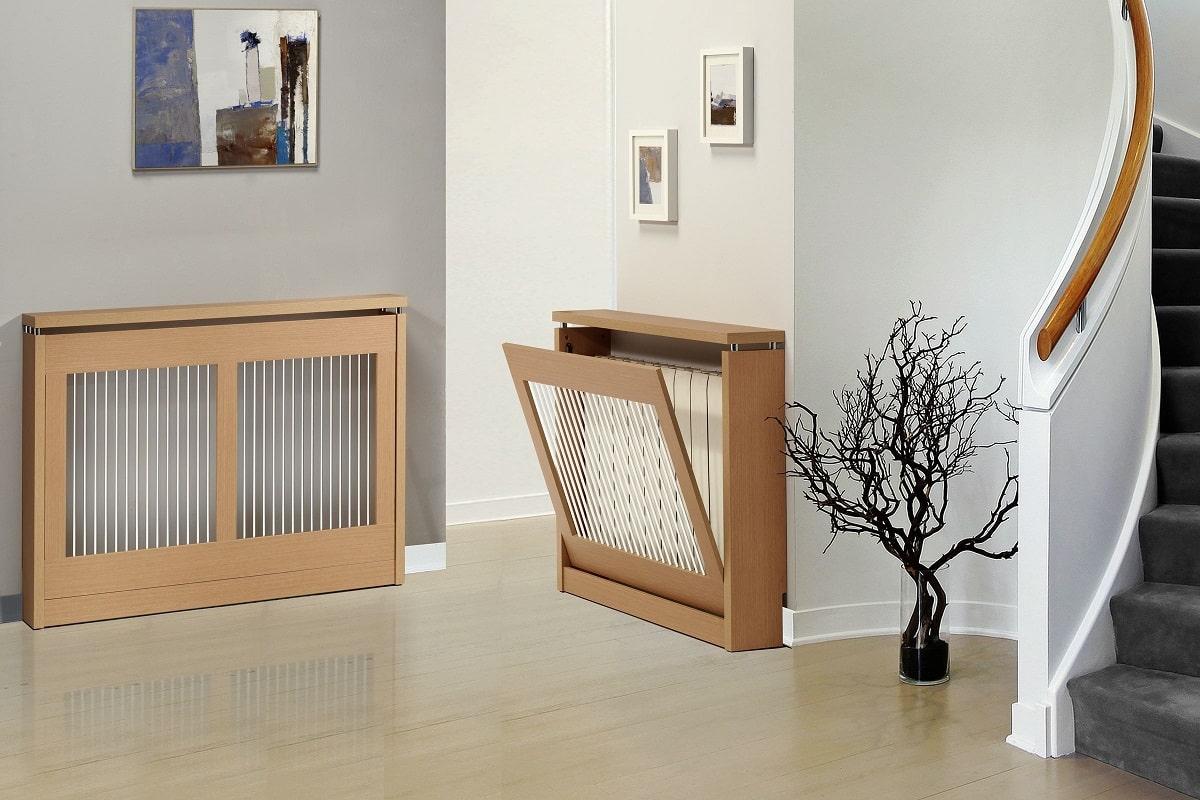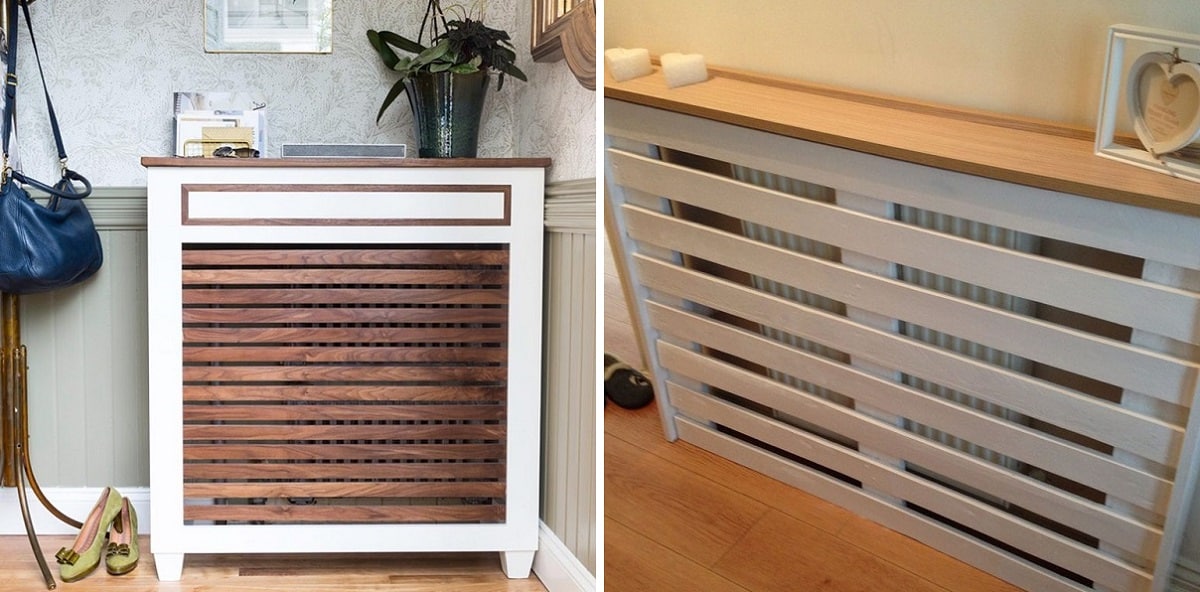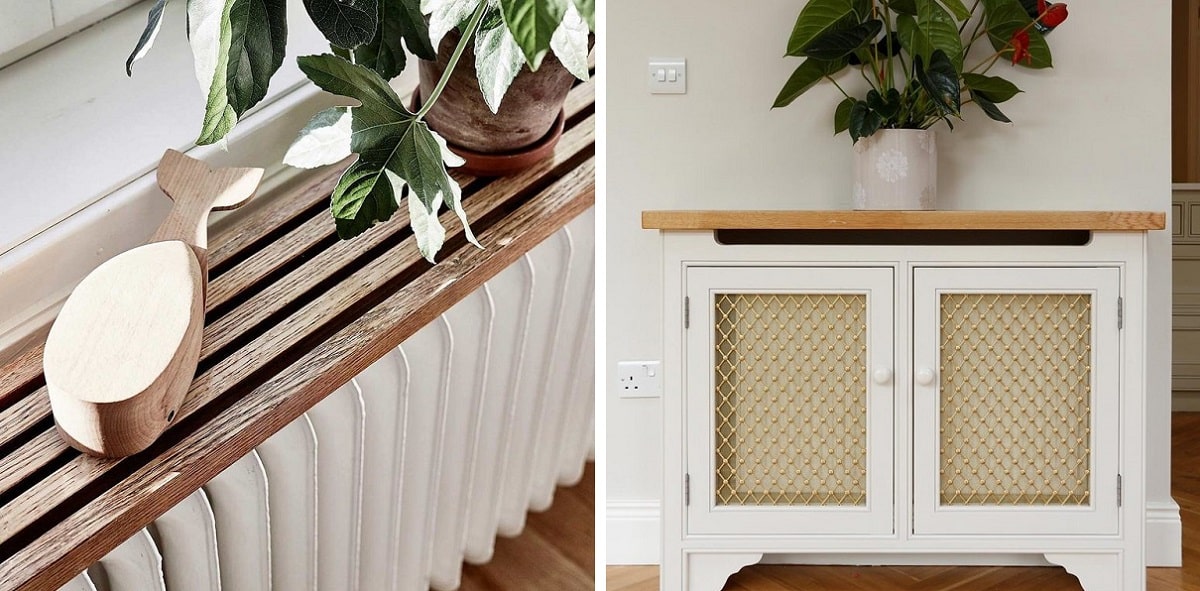
Now that winter is here, many people decide to turn on the heating, that is, to start using the radiators that we have in all the rooms. Despite the comfort they provide, from a purely aesthetic point of view, these devices are a strange element, something that clashes with the rest of the domestic decoration. Fortunately, there are many ideas for covering radiators with which we are going to integrate them with the decorative style of our home in a simple and natural way.
If you still don't know how hide those big radiatorsHere you will find many and varied solutions. Some of them go far beyond simply "hiding" the presence of the radiator, since they will allow us to make much better use of that space occupied by the radiator.
And, make no mistake, radiators are big, immobile and often ugly. However, they are essential and very effective in making living spaces warm and comfortable. Can you find the balance between aesthetics and comfort? That is what we are going to try to do with the following proposals that we offer you.
Covering a radiator is not at odds with decorating our house with attractive and striking ideas. It is not necessary to disassemble the radiator, just make it "disappear". There are many ways to cover these radiators with very nice pieces, capable of decorating a room on their own. Some of these radiator covers are true works of art. When installing them, we will not know that there is a radiator behind, because they seem like decorative pieces without more. Of course, we must remember that these pieces must let heat pass through and at the same time resist high temperatures.
Of course, when we cover a radiator we have to use a decorative resource that allows the device to be properly ventilated. It's a matter of fullfilment of security requirements elementary. It is also necessary bleed the radiator with some regularity to ensure optimum efficiency.
Wood panels to cover radiators

Let's start with the most classic solution for covering radiators: the wooden decks. This option is the best when it comes to obsolete heaters, those that we have already stopped using or that do not even work. These are often bulky appliances that are better to cover than remove. Plus, you never know if you're going to need them again, so this is a very convenient solution.
The images above show two possible ways to use wood paneling to cover a radiator. On the left, a two-tone model that combines perfectly both in a room with a classic atmosphere and in another with a more modern style.
In the example above right, another original idea: a panel to cover radiators made with pallets. The result is ideal for a country house, although it works equally well in any type of home. In short, one more use of the decoration with pallets, increasingly fashionable, and not only in rustic environments.
Ideas with wrought iron and aluminum

If we decide to use these materials to cover radiators, we are going to have to assess their strengths and weaknesses. The positive part is that they offer us a much wider range of possibilities.
El wrought iron It is very versatile, being able to take any shape we can imagine, with its bars, scrolls and decorative details. In addition, it is not a semi-watertight cover like the one provided by conventional panels, which allows heat to be distributed throughout the room.
Furthermore, the aluminum sheets (they can be installed on a wooden grid structure) they can be cut out drawing shapes and motifs so that the hot air escapes through the openings. Aluminum is easy to cut with tin snips. In addition, these panels can be painted in colors that match the rest of the room or left rough for a different effect.
The only downside to wrought iron and aluminum is that there is the risk of overheating when the radiators are running. If we carelessly put our hand on them, we can get burned. Obviously, if it is about radiators that no longer work and that we want to cover, this disadvantage does not exist.
Cover radiators in children's rooms

The issue of security that we discussed earlier, becomes even more relevant when it comes to a children's room or bedroom. For nothing in the world would we want the little ones in the house to be hurt by touching the surface of a high-temperature radiator. Covering them correctly is, therefore, an obligation rather than an option.
Luckily, there are many solutions on the market that are as practical as they are original. For obvious reasons, metallic surfaces must be ruled out and opt for Decorative panels made of wood, PVC or other materials. We have a nice example above these lines, on the right: a blue PVC-coated wood panel, with charming drawings and openings that let the heat through.
And if we still want to emphasize the practical function of these panels, how about a dual function design? On the right, an example of a mobile panel that, folded up, is used to cover radiators, but when unfolded it becomes a desk where children can play or do their homework.
One more piece of furniture for the house

Finally, we must assess the possibility of taking full advantage of the obligation to cover the radiators and transform them into a new piece of furniture for our home. And here, there is the option of orienting ourselves towards the simple or the complex. We see it in the two examples of the images shown on these lines:
On the left, a very easy way to create a new space above a wall radiator: install some simple wooden slats (better slats than a single surface, so that the heat filters properly) to set up a shelf. On it you can place different decorative elements such as scented candles, plants and other ornaments. The result, in the image above on the left.
But you can also try something more elaborate. More than a new piece of furniture, simulated furniture. In specialized stores they sell these prefabricated structures of different styles, colors and sizes. The idea is to contain the radiator and hide it from the eyes. What you see on the outside is a sideboard, with a top shelf and a two-door cabinet (see image above right). Inside, however, there is no storage space beyond that intended to house the radiator. Important: the doors must be perforated to allow the heated air to escape.
Images: Topkit, Family Handy Man.
We are in times of energy efficiency, covering radiators has the downside of wasting heat.